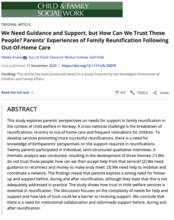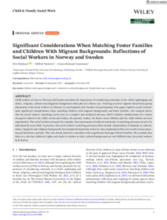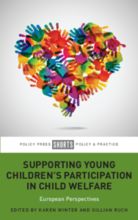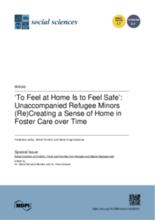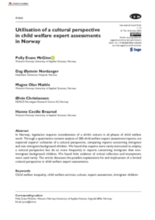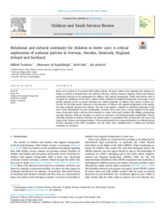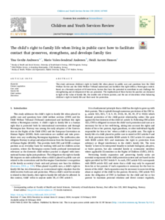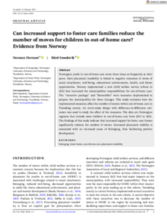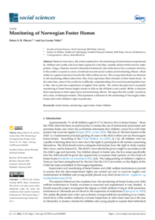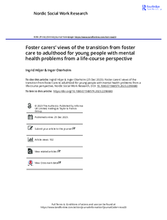Displaying 1 - 10 of 110
This study examines Norwegian birth parents’ perspectives on the support they need for successful family reunification, revealing significant gaps in guidance, financial assistance, and help mobilizing social networks. The findings underscore that low trust in child welfare services can hinder parents’ willingness to accept support, highlighting the need for stronger institutional collaboration and tailored assistance before, during, and after reunification.
This study, based on vignette-based focus group discussions with social workers in Norway and Sweden, examines how they balance children’s cultural, ethnic, religious, and linguistic continuity with other needs when matching migrant-background children with foster families, revealing a complex process shaped by the child’s and parents’ wishes, foster carers’ capacities, and organizational constraints. While social workers value cultural continuity, they often prioritize more urgent care needs—especially amid a significant shortage of foster families—creating a risk that children’s rights and needs related to their cultural background may not be fully met.
This Policy and Practice Short has emerged from an Erasmus+ Key Action 2 project funded by the European Union (EU). The project has become known as the PANDA project, an acronym drawn from the words participation and collaboration for action, and its focus is on promoting the participation rights of young children, aged 12 and under in child welfare and child protection.
This Norwegian study examines how unaccompanied refugee minors in foster care (re)create a sense of home over time, identifying security, familiarity, and autonomy as key intertwined aspects. It underscores the dynamic role of past experiences, present circumstances, and future aspirations, emphasizing the need for foster parents and child welfare workers to support cultural, relational, and personal continuity.
In Norway, legislation requires consideration of a child’s culture in all phases of child welfare work. Through a quantitative content analysis of 285 child welfare expert assessment reports, the authors explored experts’ utilisation of a cultural perspective, comparing reports concerning immigrant and non-immigrant background children.
An analysis of 14 national foster care policies across six European countries found that while most acknowledge children’s cultural, ethnic, religious, and linguistic backgrounds, they provide little concrete guidance on ensuring relational and cultural continuity—particularly for children with migrant backgrounds. The study highlights four policy patterns, including prioritizing adult over peer relationships, emphasizing parental contact over extended family or transnational ties, assuming Western cultural norms, and struggling to balance immediate care needs with maintaining cultural and relational connections.
This study addresses children’s right to family life when placed in public care and questions how the Child Welfare Service and the Child Welfare Tribunal understand and facilitate this right within a Norwegian context.
Norwegian youth in out-of-home care move three times as frequently as their peers. Such placement instability is linked to negative outcomes in terms of social attachment, well-being, educational achievements, health, and future opportunities. Norway implemented a new child welfare service reform in 2022 that increased the municipalities responsibilities for out-of-home care. This study evaluates how the implemented measures affect the number of moves within out-of-home care in Trøndelag county. Norway.
This article explores how the monitoring of foster homes in Norway is experienced by children and youths who have been exposed to what they consider abusive behaviour by foster parents. Using a thematic narrative theoretical framework, the article shows that a common narrative in the youths’ accounts is a story of mistrust towards social workers and monitoring officers, which relates to a general mistrust towards the child welfare service.
This article aims to build knowledge, from a life-course perspective, of foster carers’ views of the transition from care to adulthood for young people with mental health problems by interviewing carers from foster homes in Norway and Sweden.

